Matchday programmes have been produced for St Albans City since the 1921-22 season. To say 'produced for' emphasises the point that for the early years the club did not have a direct involvement in the finished product. Production was left in the very capable hands of the Herts Advertiser who, along with their then sister paper, The Hertfordshire News, covered the affairs of the Football Club extensively. The partnership between the Club and the newspaper was a business matter with the Herts Ad paying for the franchise season on season. When City won the Isthmian League for the first time in 1923-24 the programme sales for the season were 22,290. A total of 20 home games were played that season, this includes five friendly matches. Assuming that programmes were produced for all of the friendlies sales still topped 1,110 per game. During the 1925-26 season the Club enjoyed two successive home gates of just short of 10,000, making the likelihood of this being the season with the highest number of programme sales per game.
The collection viewed here includes two items that pre-date the first official programme. The 1894 programme is actually a flyer advertising an FA Cup tie between the original St Albans Football Club and Luton Town. It was owned by the St Albans goalkeeper Jack Dickerson who also had a spell with Luton.
The second item from 1912 is another flyer promoting City's Spartan League game at Clarence Park with the short-lived Watford Orient club. The flyer mentions that a collection will be taken for H. Gathard. This was Arthur Gathard who suffered a leg injury during a Reserve team match on the 9th November. Arthur was one of seven City footballers to perish during the Great War.
Sticking with the unwanted theme of war, the collection includes the cover for our final programme before the outbreak of World War II and our first during that conflict. For the first season after the war the club produced just single-sheet efforts for each games, many clubs were already back to producing full editions.
The design of the cover has changed many times down the years but also stayed unchanged for many years on other occasions. There have been some very smart designs along with plenty of quite shocking efforts that should never have seen the light of day; several years from the second half of the 1970s and 1991-92 and 1992-93 sit perfectly in the latter category. Some years not only failed to mention the match in question on the cover but also the season.
Since the latter part of the 1990s the cover has changed for each match with an action photograph replacing the static appearance of earlier years.
In 2020 a downladable digital programme was available on the official website. This was due to the Covid 19 pandemic where games were played "behind closed doors".
Hover over an image for the date and click for large scan.
The 1890's |
The 1910's | 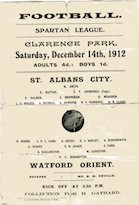 1912-13 1912-13 | | | | | | |
1920's
The 1920s was an era of unprecedented and unrepeated success for St Albans City on the pitch and a time of great expansion off it.
Between 1920 and 1928, the club won five league titles, appeared in the three Amateur Cup semi-finals, lifted the Herts Charity Cup six times, the Herts Senior Cup once, and collected silverware in the Channel Isles and Belgium. At Clarence Park , terraces, in the form of railway sleepers were introduced, the main stand was extended, dressing rooms were installed and matchday programmes were produced for the first time.
The 1921-22 season was the first in which spectators could purchase programmes. They remained available at all games until the coronavirus covid-19 pandemic forced games to be played behind closed doors in 2020 and the programme only available as a digital download.
From 1921 until the outbreak of World War II the programmes were printed by ‘the Proprietors of the Hertfordshire News.’ This, effectively, was the Herts Advertiser. The Hertfordshire News was a superb, though sadly short-lived, offshoot of the Herts Ad that concentrated on sport and provided outstanding coverage of St Albans City. After The News was published for the final time on 2nd May 1922, the programme was produced by ‘The Proprietors of the Herts Advertiser.’
The oldest known surviving copy from that first season is from our second home match of the campaign, an Athenian League match at home to Summerstown on 17th September (below). Summerstown were a club based in the Euston area of London. The programme was a single sheet, folded once. When opened it was just under 11” wide and 8” high (approx. 27.3cm x 20.4cm), it was printed on pink paper with black type. The layout was one that was popular in amateur and semi-professional football programmes for virtually all of the 20th century with the team line-ups printed in the middle of the centre pages. Although this was before the days of players wearing number on their shirts, the home players appeared in the programme as 1-11 and the away team 12-22.
Teams generally played in what was known as the ‘W’ formation of two full backs, three half backs and five forwards. Starting with the goalkeeper as No.1, the teams lined up as;
2 right back, 3 left back; 4 right half, 5 centre half, 6 left half; 7 outside right, 8 inside right, 9 centre forward, 10 inside left, 11 outside left.
The players’ names were overprinted onto a football pitch with each player shown in the position that they were due to play. City stuck with this format until the 1968-69 season when the names of the players were then listed in a single column and numbered 1-11.
The programme for the Summerstown match has several connections to the City at that time and also the original St Albans Football Club (1881-1904).
On the front page is W.S. Green; clothes fitters and sports equipment specialist in Chequer Street. This was owned by William ‘Bill’ Green who later formed a business partnership with St Albans City’s outside-right Percy Winter. The duo traded under the name of Green & Winter in the latter’s store in Market Place and they often displayed cups won by the club in their shop window.
The centre pages have two connections to the original St Albans Football Club. At the top of the page is ‘The Poly.’ After burning down in 1927, it was better known in later years as the Odeon and, then, the Odyssey. In the programme, The Poly is advertising dancing led by Jack Dickerson. ‘Dicky’ was a teacher at Hatfield Road School, goalkeeper for St Albans (132 appearances, 1891-1899) and, in 1911, he refereed the Amateur Cup final between Bishop Auckland and Bromley. He was also a highly acclaimed dancer and dance teacher who won numerous honours. Jack is buried in an unmarked grave in the Hatfield Road cemetery.
Towards the foot of the page on the right-hand side is an advertisement for H. Olney & Sons, sellers of footwear in Market Place. Henry Olney played for the original St Albans club between 1898-1903.
The 1920's | 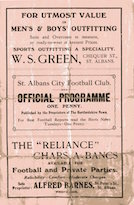 1921-22 St Albans City v Summerstown - 17/09/21 1921-22 St Albans City v Summerstown - 17/09/21 |  1922-23 1922-23 |  1924-25 1924-25 |  1925-26 1925-26 |  1926-27 1926-27 |
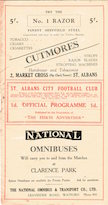 1927-28 1927-28 | 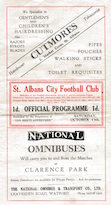 1928-29 1928-29 | 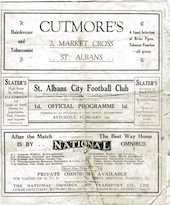 1929-30 1929-30 |
The 1930's | 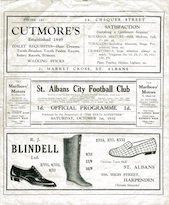 1931-32 1931-32 | 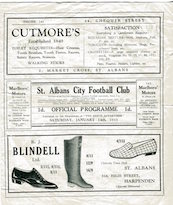 1932-33 1932-33 | 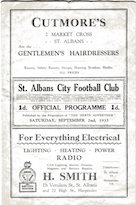 1933-34 1933-34 |  1934-35 1934-35 | |
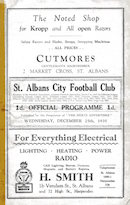 1935-36 1935-36 | 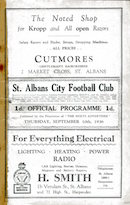 1936-37 1936-37 | 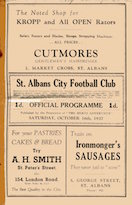 1937-38 1937-38 | 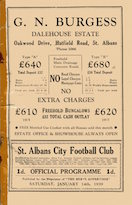 1938-39 1938-39 |  1939-40 1939-40 |
The 1940's |  1945-46 1945-46 | 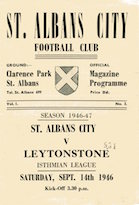 1946-47 1946-47 | 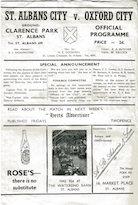 1947-48 1947-48 | 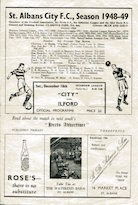 1948-49 1948-49 | 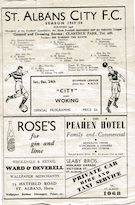 1949-50 1949-50 |
The 1950's |  1950-51 1950-51 | 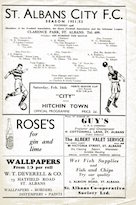 1951-52 1951-52 | 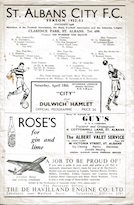 1952-53 1952-53 | 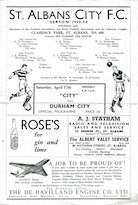 1953-54 1953-54 | 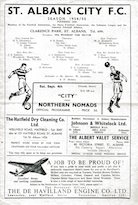 1954-55 1954-55 |
 1955-56 1955-56 | 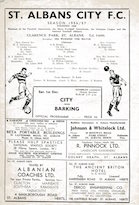 1956-57 1956-57 | 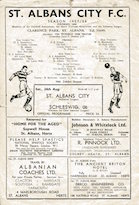 1957-58 1957-58 | 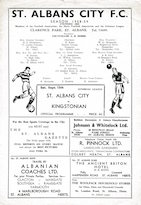 1958-59 1958-59 | 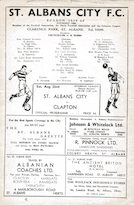 1959-60 1959-60 |
The 1960's |  1960-61 1960-61 |  1961-62 1961-62 |  1962-63 1962-63 | 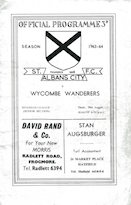 1963-64 1963-64 | 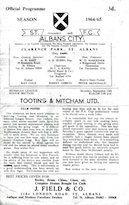 1964-65 1964-65 |
 1965-66 1965-66 | 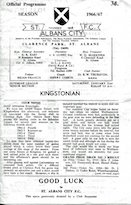 1966-67 1966-67 | 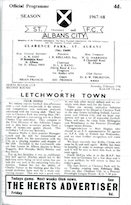 1967-68 1967-68 | 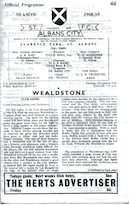 1968-69 1968-69 | 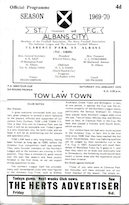 1969-70 1969-70 |
The 1970's | 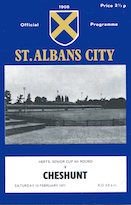 1970-71 1970-71 | 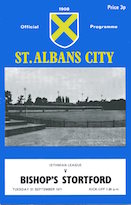 1971-72 1971-72 | 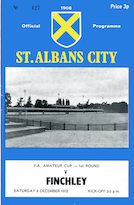 1972-73 1972-73 |  1973-74 1973-74 | 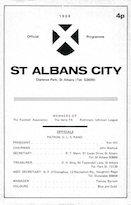 1974-75 1974-75 |
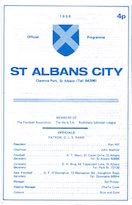 1975-76 1975-76 |  1976-77 1976-77 | 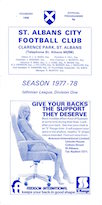 1977-78 1977-78 |  1978-79 1978-79 | 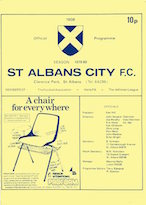 1979-80 1979-80 |
The 1980's | 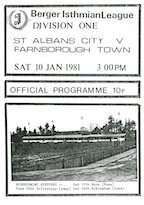 1980-81 1980-81 | 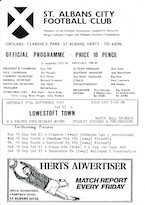 1981-82 1981-82 |  1982-83 1982-83 | 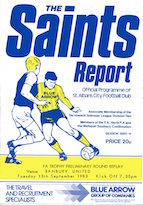 1983-84 1983-84 | 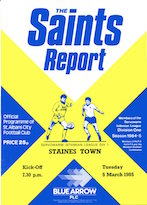 1984-85 1984-85 |
 1985-86 1985-86 |  1986-87 1986-87 |  1987-88 1987-88 | 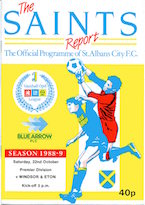 1988-89 1988-89 | 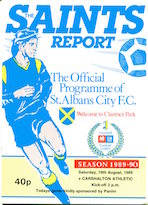 1989-90 1989-90 |
The 1990's |  1990-91 1990-91 |  1991-92 1991-92 | 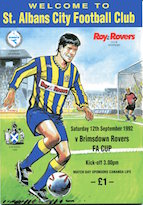 1992-93 1992-93 | 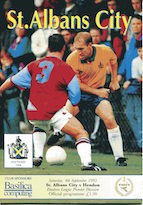 1993-94 1993-94 | 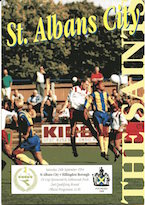 1994-95 1994-95 | ||
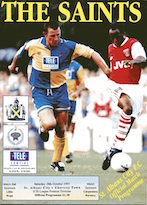 1995-96 1995-96 | 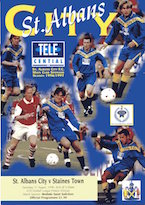 1996-97 1996-97 | 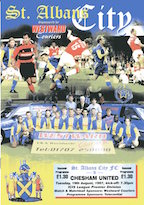 1997-98 1997-98 | 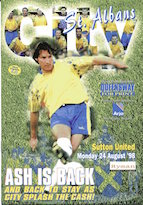 1998-99 1998-99 | 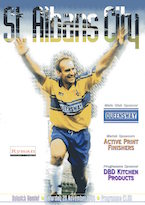 1999-00 1999-00 | |||
The 2000's | 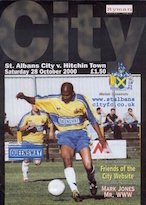 2000-01 2000-01 | 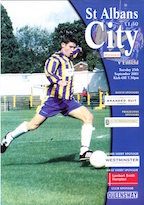 2001-02 2001-02 | 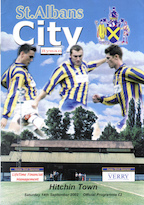 2002-03 2002-03 | 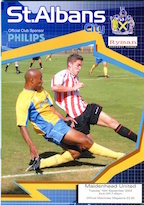 2003-04 2003-04 |  2004-05 2004-05 | |
 2005-06 2005-06 | 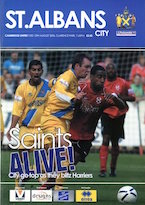 2006-07 2006-07 | 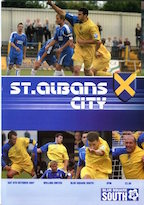 2007-08 2007-08 |  2008-09 2008-09 | 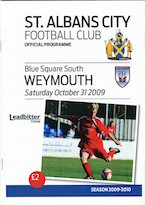 2009-10 2009-10 | ||
The 2010's | 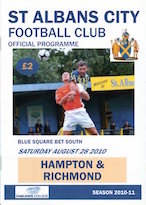 2010-11 2010-11 |  2011-12 2011-12 | 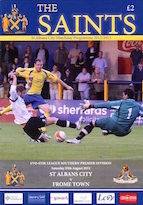 2012-13 2012-13 | 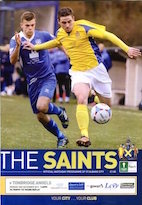 2013-14 2013-14 | 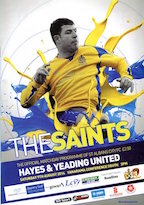 2014-15 2014-15 |
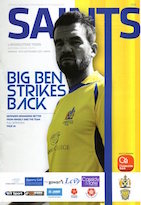 2015-16 2015-16 | 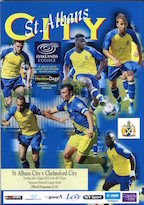 2016-17 2016-17 |  2017-18 2017-18 | 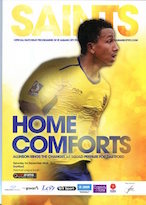 2018-19 2018-19 |  2019-20 2019-20 |
The 2020's | 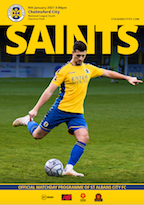 2020-21 2020-21 |

small.jpg)